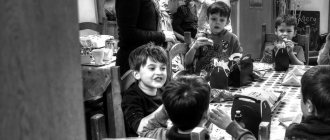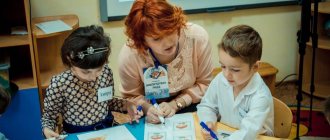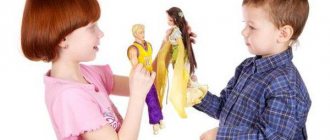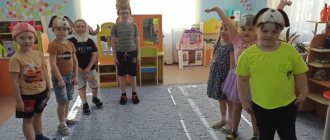Didactic material on teaching fire safety measures and rules
Didactic material is a special type of teaching aids, mainly visual, demonstrated by the teacher in front of the whole class (group). The use of didactic material helps to intensify the educational activities of students and save study time.
In the process of teaching fire safety measures and rules in preschool organizations and general education organizations, the following didactic material can be used:
— elements of fire protection systems for buildings and structures;
— primary fire extinguishing agents;
- individual protection means;
— fire and rescue equipment;
— didactic materials related to fire issues (books, printed materials (posters, coloring books, instructions, etc.), videos, filmstrips, audio files, etc.).
Crafts from napkins
Paper napkins make magnificent crafts. One popular option is to roll napkins into small balls and soak them in gouache of different colors. From such elements you can put together a three-dimensional picture. The technology is the same as when working with beads.
Even a small master can make voluminous figures from such lumps. The photo shows a small composition on a fire theme. The frame of a machine or structure is assembled from matchboxes or cardboard boxes. On top it is tightly covered with balls of napkins, painted in the desired color.
Crafts reflecting fire-fighting themes, made by a child together with an adult, help to learn the basic rules of fighting fire. They can be made from different materials and in different ways. It is important to inspire the little master to be creative, and he will receive the necessary information during the process of work.
Organization of a classroom, fire safety corner
One of the most common emergencies is fire. As a rule, in extreme conditions people lose the ability to adequately respond to what is happening. Therefore, in order to avoid tragedy, it is necessary to inform people in advance about actions during a fire. This information should be visual, accessible and easy to remember. For this purpose, classes and fire safety corners can be created in preschool educational organizations and general education organizations. At the same time, their creation and functional content are not regulated by regulatory legal acts and normative documents.
The fire safety class can accommodate:
— elements of fire protection systems for buildings and structures;
— primary fire extinguishing agents;
- individual protection means;
— fire and rescue equipment;
— didactic materials related to fire issues (books, printed materials (posters, leaflets, instructions, etc.), videos, filmstrips, audio files, etc.).
One of the effective methods of achieving the goal of informing people about actions during a fire is to design and place a fire safety corner in a visible place with good traffic.
There are a variety of types, types, design options for fire safety corners, methods of printing them, methods of placement (floor-mounted, wall-mounted, mobile).
The fire safety corner should reflect the specifics of the organization’s activities and may contain both methodological and handout material.
The following information can be presented at the fire safety corner stands: evacuation plan, instructions on fire safety measures, liability for violation of fire safety requirements, procedures for action in case of fire, fire safety requirements, instructions on the use of primary fire extinguishing equipment, fire safety signs, etc. .
Examples of the design of a fire safety corner are presented in Figures 1 – 3.
Rice. 1. Example of design of a fire safety corner
Rice. 2. Example of design of a fire safety corner
Rice. 3. Example of design of a fire safety corner
Fabric crafts
Applications using colored patches look very impressive. Such paintings have an important advantage: they can be made soft using thick fabric as a base. The photo shows a warning picture that will remind you of the dangers of matches. The necessary details are sewn onto the woven base. To add volume, cotton wool is placed under some flaps. Human figures or his face can be embroidered or drawn.
Another direction is voluminous woven crafts. In the photo there is a “Fun Fire Extinguisher”. You can use foam rubber or polystyrene as a base. The base is covered with red fabric. Characteristic small details are sewn on. They can be made from ribbons, braid, felt. This craft is absolutely safe for kids.
QUESTIONS FOR SELF-CONTROL
- In accordance with what regulatory document on fire safety is training in fire safety measures carried out?
- What document regulates the frequency of practical training on evacuating people from buildings of preschool educational organizations and general education organizations?
- Who monitors the organization of fire safety training for employees of preschool educational organizations and general education organizations in accordance with Order of the Ministry of Emergency Situations of Russia dated December 12, 2007 No. 645?
- What is the nature of training students in fire safety measures?
- The frequency of practical training on evacuating people from buildings of preschool educational organizations and general education organizations is?
- What information can be placed on the fire safety corner stands?
- What are the objectives of conducting practical training on evacuating people from buildings of preschool educational organizations and general education organizations?
- Should an evacuation plan be developed for buildings of preschool educational organizations and general education organizations?
- Who should report the discovery of a fire in the building of a preschool educational organization or general education organization to the fire department?
- What information must be reported to the fire department when a fire or signs of burning are detected?
- When does the process of evacuation of students and staff from the buildings of preschool educational organizations and general education organizations begin in case of fire?
- What actions does the staff of preschool educational organizations and general education organizations take after completing the fire evacuation process?
- What is taken into account when conducting fire safety training?
- What is the basis of fire safety training?
- Indicate the sequence of actions of staff, pupils and students of a preschool educational organization, general education organization upon detection of a fire or signs of combustion, which consists of the following elements: a) checking the presence of pupils, students, staff of a preschool educational organization, general education organization; b) collection at a predetermined place; c) fire warning signal; d) evacuation
Crafts from cereals
Quite simple crafts can be created from semolina. To do this, colored semolina is prepared: the cereal is mixed in a container with gouache of the desired color until a rich shade is obtained and dried. For a fire truck you will need red, black and gray semolina, as well as undyed (white) semolina.
The outline of the machine is drawn on a sheet of thick paper or cardboard. Glue is applied inside the lines and red material is poured in a thin, even layer, and excess grain is shaken off. Then other colors are carefully formed into small details. When the picture is ready, glue is applied to the paper outside the outline, creating a general background of unpainted semolina.
LITERATURE
- Federal Law of December 21, 1994 No. 69-FZ “On Fire Safety”. - “Rossiyskaya Gazeta”, No. 3, 01/05/1995;
- Decree of the Government of the Russian Federation of April 25, 2012 No. 390 “On the fire safety regime.” - “Collection of Legislation of the Russian Federation”, 05/07/2012, No. 19, Art. 2415;
- Order of the Ministry of Emergency Situations of the Russian Federation dated December 12, 2007 No. 645 “On approval of fire safety standards “Training in fire safety measures for employees of organizations.” — “Bulletin of normative acts of federal executive authorities”, No. 13, 03/31/2008;
- Methodological recommendations for training in the field of civil defense, prevention and response to emergency situations and fire safety. (Approved by the Ministry of Emergency Situations of Russia on June 20, 2014). The document was not published;
- Methodological recommendations for organizing training for managers and employees of organizations. Fire safety briefing and fire-technical minimum. (Approved by the Ministry of Emergency Situations of the Russian Federation). – “Library of a labor protection engineer”, No. N 1 - 2, 2007;
- Methodological recommendations “Organization of training for the evacuation of personnel of enterprises and institutions in case of fire and other emergency situations” (Approved by the Chief State Inspector of the Russian Federation for Fire Supervision on September 4, 2007 No. 1-4-60-10-19);
- Ensuring fire safety of national economic facilities. Part 3. Organizational and technical measures. Under general ed. IN AND. Kozlachkova. – Minsk: “FOIKS”, 1998. – 317 p.;
- Sukhomlinsky V. A. I give my heart to children. — Fav. ped. cit.: in 3 volumes - M., 1979, vol. 1, p. 33.
- Internet resource https://ddt2mariinsk.ucoz.ru/index/pozharnajabezopas nost/0-16;
- Internet resource https://www.profi-ra.ru/agit/stend1/;
- Internet resource https://marina-tcherepanina.narod.ru/index/0-4.
Drawing
You can invite the kids to draw a fire and how firefighters extinguish it. Children are not required to produce a highly artistic work, the main thing is that they feel the significance of their creativity. You can draw with pencils, felt-tip pens, crayons, and at an older age - with paints.
MAGAZINE Preschooler.RF
Project to develop a fire safety culture for preschoolers “The ABCs of Fire Safety”Developer: Alena Nikolaevna Basova, teacher of the highest qualification category Khanty - Mansiysk Autonomous Okrug - Yugra Oktyabrsky District Municipal autonomous preschool educational institution "Kindergarten of general developmental type "Romashka" Unyugan 2021
Abstract: This project is dedicated to an urgent problem: educating preschool children about fire safety culture. The implementation of the project involves the opportunity to explain to children in a playful way what rules must be followed when handling electrical appliances, the dangers of playing with fire, what will happen if you remain in a burning house, how to call firefighters for help. The duration of the project is 2 months. As part of this project, a thematic research work was carried out “Why is a fire bucket shaped like a cone?” , which was later presented at the regional conference “Young Prospector” and won a prize.
Project type: information-practice-oriented.
Method of execution: group (children 6-7 years old).
Duration: medium term.
Project participants: teachers, children, parents.
Social connections: fire department CenterSpasYugoria.
Relevance:
Careless handling of fire is the most common cause of fires in Ugra. The majority of all fires occur due to the fault of people who do not know fire safety rules or are irresponsible about them. Many people believe that fire is a rare occurrence. They hope that trouble will pass them by. But this doesn't always happen. A fire not only destroys everything material, but sometimes also takes human lives.
From a very young age, it is necessary to develop in children a conscious and responsible attitude towards personal safety and the safety of others. And we adults need to take this seriously. It is in preschool age that the foundations of education are laid. Therefore, one of the important tasks of our kindergarten is to instill in children the skills of careful handling of fire and compliance with fire safety rules.
The propaganda team is an indispensable assistant in promoting safe behavior among children. For several years now, our kindergarten has been hosting an annual Review of Children's Safety Propaganda Teams. Each age group prepares a speech in which it calls for observing safety rules in one or another area of life. The need to complete the project arose during the preparation of the children of the preparatory group for the next performance of the propaganda team. This time our group chose fire safety. In a conversation with children on the topic “What will I do if there is a fire in the house?” it was found that many children would hide at the sight of a fire, instead of running out of the house and calling for help.
Problem formulated by teachers and children: What happens if you hide under a bed or in another secluded place during a fire in the house?
The goal of the project for children is to develop a conscious and responsible attitude towards compliance with fire safety rules.
The goal of the project for the teacher is to teach preschoolers fire safety rules in a preschool setting.
Tasks of working on a project for children:
- Improve your knowledge of the work of firefighters.
- Develop the skill of communicating with the fire department on duty in an emergency.
- Introduce children to primary fire extinguishing means.
- Develop the skill to realistically assess possible danger.
- To develop the ability to deal with the fear of fire and the warning signal in case of fire.
- Instill practical skills in how to behave in the event of a fire.
Tasks of working on the project for teachers:
- Improve the level of children’s existing knowledge about fire safety.
- Develop an algorithm for behavior in preschoolers in fire-hazardous situations.
- Involve parents of students to participate in the project.
- Enrich children's vocabulary in accordance with the topic.
- Contribute to the establishment of cause-and-effect relationships in situations of human action with fire.
- Develop curiosity, sociability, and the ability to solve emerging problems.
Description of the product obtained as a result of the project:
- Compiling mini-albums for children and parents (pictures, drawings, a child’s story) on the topic “I know how to behave during a fire .
- Speech by the propaganda team on fire safety rules.
Main educational area: “Socio-communicative development” .
Integration of educational areas: “Cognitive development” , “Artistic and aesthetic development” .
Activities:
Gaming:
- role-playing games “We are firefighters” , “Fire in the house”
- game and problem situations “There is a lot of smoke in the apartment, “How to call the fire department if there is a fire”
- board-printed and didactic games on fire safety.
Cognitive:
- conversation on the topic “Why can a fire happen?”
- conversation on the topic “Dangerous objects - a source of fire”
- excursion to the fire station
- educational quiz “Don’t play with fire, follow the fire rules!” .
Artistic:
- collective application - making symbols on the theme “So that there is no fire”
- drawing "Fire truck"
- reading fiction: S. Mikhalkov “Uncle Styopa” , L. Tolstoy “Fire Dogs” , “Fire” , E. Khorinskaya “Little Match” , S. Marshak “Cat’s House” , K. Chukovsky “Confusion” .
- modeling "Firefighter" .
Material and technical resources required to complete the project:
- equipment for artistic and productive activities;
- illustrations, posters on fire safety rules;
- attributes for role-playing games;
- fiction;
- didactic and printed board games on fire safety rules;
Planned work and activities of children and teachers at various stages of the project:
Stages
| Content of children's activities during the project implementation | Contents of teachers’ activities during the project implementation | |
| Stage 1 – search (1 day) | 1. Get into the problem. They assume different outcomes for the development of events in the current situation. They wonder how dangerous a fire is. 2. Accept the task. | 1. Problem formulation: What happens if you hide under a bed or in another secluded place during a fire in the house? In order to behave correctly in case of fire, you need to remember fire safety rules! 2. Formulation of the problem - collection of information:
|
| Stage 2 – analytical (1 Week) | 1. Activate the ability to avoid dangerous situations, clarify knowledge about the work of firefighters. 2. Have the opportunity to perform a conditional extinguishing of a small fire, and acquire basic fire extinguishing skills. 3. Expand your horizons and vocabulary. | 1. Organization of an excursion to the fire station of the Taiga MGP. A meeting with a firefighter is the most effective method in the prevention of fire safety violations. An experienced “tour guide” and an excellent conversationalist - the department commander - spoke about the hard work of firefighters and how to avoid trouble. He also introduced preschoolers to the firefighter uniform and the equipment of a fire truck. 2. Introducing children to primary fire extinguishing means. The fireman introduced the children to the operation of a fire extinguisher, explained and showed the principle of its operation. Then he talked about other fire extinguishing equipment that is available on the territory of our kindergarten - the tools located on the fire panel, their purpose and application in practice. 3. Placement in the safety center of material for teaching children fire safety (selection of illustrations, posters, fiction, didactic and board games, toys). |
| Stage 3 – practical (1.5 months) | 1. Improve the level of existing knowledge about fire safety. 2. Clarify knowledge about the work of firefighters. 3. Enrich gaming and practical experience. 4. Acquire the skill of communicating with the fire department on duty in an emergency situation. 5. Enrich vocabulary in accordance with the topic. 6. They practice a certain algorithm of actions that allows them to consolidate knowledge and skills to behave correctly in the event of a fire on the territory of the kindergarten, while remaining calm. | 1. Conversation at the safety center on the topic “Why can a fire happen?” A constant friend of our kindergarten, the fire safety inspector at CenterSpasYugoria, talked with the children about what could cause a fire and who is often to blame for starting a fire. 2. Productive activity (collective application). Making symbols on the theme “To prevent fire.” 3. Conversation at the safety center on the topic “Dangerous objects - a source of fire” To consolidate knowledge about household items that can become a source of fire (electrical appliances, gas stove, matches) that require careful handling. 4. Productive activity (drawing). Drawing a fire truck. 5. Reading fiction: S. Mikhalkov “Uncle Styopa”, L. Tolstoy “Fire Dogs”, “Fire”, E. Khorinskaya “Little Match”, S. Marshak “Cat’s House”, K. Chukovsky “Confusion”. 6. Productive activity (sculpting). "Firefighter" 7. Organization of role-playing games “We are firefighters”, “Fire in the house” 8. Playing out game and problem situations “There is a lot of smoke in the apartment, “How to call the fire department if there is a fire.” 9. Conducting an educational quiz “Don’t play with fire, follow the fire rules!” 10. Training evacuation of preschool children and staff in case of fire (according to the schedule). |
| Stage 4 – presentation (2 days) |
2. Compiling mini-albums of children and parents (pictures, drawings, a child’s story) on the topic “I know how to behave during a fire” and presenting them in a group. | 1. Preparing the participants of the propaganda team for the performance. Speech by the propaganda team on fire safety rules. 2. Design of an exhibition of mini-albums on the theme “I know how to behave during a fire” |
Working with parents:
The most valuable thing for parents is their children. Success in working to ensure fire safety for children can only be expected when not only teachers are interested in this, but also if parents approach this problem with full responsibility and are convinced of the need for fire safety measures. Parents must understand that the knowledge acquired in kindergarten must be reinforced at home.
Parents of our students became active participants in this project: they accompanied their children on excursions to the fire station; read fiction to children recommended by teachers; watched cartoons about fire safety rules with the children; reinforced children’s skills in using electrical appliances correctly; Together with the children, we made mini-albums on the topic “I know how to behave during a fire” ; on the preschool educational institution’s website they had the opportunity to watch the performance of the propaganda teams. Joint activities always bring parents and children closer, teach mutual understanding, trust, and make them real partners.
Interaction with the family allowed us to achieve the greatest results in working with preschoolers on the topic being studied. “For a child, a family is a source of social experience. Here he finds role models and here his social birth takes place. And if we want to raise a morally healthy generation, we must solve this problem “with the whole world” : kindergarten, family, public.”
V.A. Sukhomlinsky
Project results:
Work on this project allowed us to solve the assigned tasks. As a result of the project, children learned an algorithm for behavior during a fire, became familiar with primary fire extinguishing means, and reinforced the rules that help prevent a fire.
As part of this project, a thematic research work was carried out “Why is a fire bucket shaped like a cone?” , which was later presented by one of the children of the group at the regional conference “Young Prospector” and took a prize (Appendix 1).
This topic inspired not only children, but also teachers to create a dance called “Fire and Water ,” the author of which is the music director of our kindergarten. The teachers presented this dance at the regional festival-competition “Inspiration” , winning the audience award. And the girls of the school preparatory group presented this dance at the annual village festival-competition of children's creativity “Silver Hoof” , winning 1st place.
Teaching preschoolers fire safety skills should not be limited to just one project. This must be a long-term, targeted, systematic impact on the child.
Depending on the results achieved, the education of a fire safety culture for preschool children in preschool educational institutions provides for the adjustment of the developed measures at the next stages of work.
List of sources:
- Avdeeva N.N. Safety: A textbook on the basics of life safety for children of senior preschool age. - St. Petersburg: “Childhood-PRESS” , 2004.
- Belaya K.Yu., Zimonina V.I., Kondrykinskaya A.A. “How to ensure the safety of preschool children” - Education, 2004.
- About working with children to prevent fires: Method. allowance. - Kemerovo, 2006.
- Pavlova, O.V. Methodological recommendations for teaching fire safety rules to children in preschool educational and general educational institutions // O.V. Pavlova. – Volgograd: Teacher, 2001.
- Shorygina T.A. Conversations about fire safety rules. M: 2008.
- Internet resources
| < Previous | Next > |






